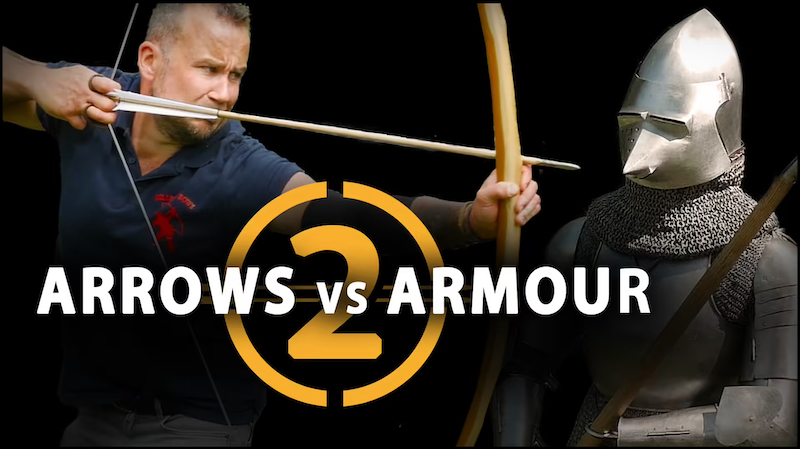The main film can be found here https://youtu.be/ds-Ev5msyzo
This film was funded by a Kickstarter drive and is presented by myself, Dr Toby Capwell (historian) , Will Sherman (fletcher), Joe Gibbs (archer) and Augusto Boer Bront (armorer).
We use equipment made by the contributors, but also by Isak Krogh (mail aventail), Christine Carnie (arming cote), Phil Parkes (mail standard) and Owen Bush (historic irons and steels).
‘Arrows vs Armour’ is back and we are shooting medieval war arrows at the top half of an armoured knight using armour and arrows that are correct in every detail. This film shows exactly what happened…….
Thousands of knights were slain by the English archers at battles like Agincourt, even though they wore full armour; we just didn’t know how and this film goes a long way to explaining what actually occurred.
TV companies have no interest in doing these tests for real with correct armour and real experts who talk about what they see, not about what the script tells them to say. We film it and we show it. No pre-written scripts, no hype, no fluff, no predetermined TV outcomes; just factual truth.
All filmed by professional TV crew, but working for us, our way.
This project generated so many questions that we had to make other films to answer them, so later today a further 3 films will be released looking at mail, armour materials and arrow head materials and a further 4 more films over the next couple of weeks.
We hope you enjoy them.
Tod
